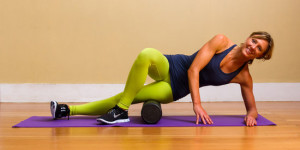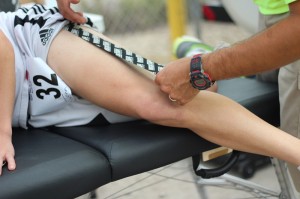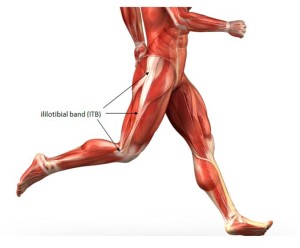Iliotibial Band Syndrome or ITBS Treatment and Cure
Do you feel pain on the outer side of your knees? Tightening or swelling on your upper legs? Pain and weakness when moving your hips sideways? This might be Iliotibial band syndrome. Watch out!
The Iliotibial band or ITB is a long tendon-like structure that stretches from the pelvis to the knees. It supports and strengthens the knees, helps the hip move sideways and contributes to stabilization in the legs.
Iliotibial Band Syndrome Causes
While running or doing any physical activity, the iliotibial band rubs across the bony part of the knees where it is connected. The rubbing causes friction and irritation which over time turns to inflammation and pain. This usually happens if the runner has poor running technique or if the runner has excessive hill training or mileage training. If left unchecked it could lead to bursitis and could sideline the runner for several weeks. Over training and over exertion also contributes to ITBS so even seasoned runners have to beware.
Iliotibial Band Syndrome Prevention
Here are some ways to prevent ITBS from turning into a total nightmare for beginners and seasoned runners alike.
Decrease mileage once in a while. Running long distances like ultra marathons and full marathons are really cool especially if you’ve been doing it for a long time. However, you might need to decrease mileage once in a while or rest especially if you’re beginning to feel pain at the sides of your knees.
Warm up. Warm up may seem dull to some runners and others might want to blast off in the first few minutes. However, stretching the legs before a good run will help any athlete prevent any serious injuries. Take time to stretch for a few minutes just enough to keep your muscles primed for a jog. Another form of warming up is walking or a light jog a few miles before you start your run.
Strengthen those leg muscles. Apart from warming up, leg exercises aimed at strengthening the core muscles, the hips, the gluteus and the legs helps strengthen your ITB. One such exercise is placing one leg on an elevated platform and lowering the other leg on the ground slowly. Or you can use a roller foam to stretch those muscles and strengthen them.

Iliotibial Band Syndrome Treatment
In instances where you might be feeling the pain on the sides of your knees, here are some ways to cure or manage ITBS.
Rest or Cross Train. For seasoned runners, rest is also needed. Over training could lead to over exertion. Either you take shorter runs or no runs at all. If you are already feeling pain, stop and allow the pain to subside. Consider alternative workouts that put less tension on the ITB like swimming or cycling.
Stretch it a little. If the pain happens while running, stop and do some side stretches. This was also known to help ease the tension and tightening of the muscles.
Ice on the swollen ITB. This helps alleviate the pain and control the swelling. Use an ice pack or a towel wrapped in ice and apply for at least 20 minutes. Stop if the skin becomes numb or if the pain and swelling subsides.
Taping. Apply Kinesiology Tape (KT) to the affected leg. When applied properly, KT Tape can help to relieve ITB pain by decreasing pain of rubbing or compression along the outer knee, as well as to help decrease swelling and inflammation.

Self medication. Pain killers such as ibuprofen and aspirins can also help. However this does not mean that the friction disappears. Cortisone could also be injected by trained medical personnel but it can weaken the ligaments and tendons.
Go seek a doctor. Chronic pain may mean bigger damage. See a sports physician or a physical therapist that could provide the right exercise and treatment. Severe cases may require surgery. Hopefully not!
Do you feel pain at the sides of your upper knees? Don’t ignore it! It might be ITBS. Are you suffering from ITBS? Share to us how you managed it on the comments below.
More about Running Injuries:

Relevant post! Kudos for sharing!
If the symptoms are ignored, the inflammation can continue and scarring
develop in the bursa, decreasing knee range of motion and causing
increasing pain with decreasing activity.